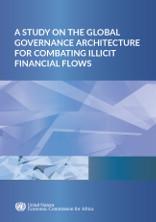A study on the global governance architecture for combating illicit financial flows

The most up-to-date estimates by the Economic Commission for Africa indicate that during the period 2000-2015, net illicit financial flows between Africa and the rest of the world averaged US$73 billion (at 2016 prices) per year from trade misinvoicing alone. Recent exposure of illicit financial flow scandals shows that those involved in such activities have used a range of practices to perpetrate the flows. Furthermore, there are a number of fundamental enablers of illicit financial flows that cut across institutions, sectors and stakeholders, such as: the benefits to the perpetuators, the facilitating infrastructure, the absorptive jurisdictions and the constraints of public authorities.
Since the release of the African Union-Economic Commission for Africa High-Level Panel on Illicit Financial Flows report in 2015, some headway has been made at the global level, but this continues to be in silos of sectors, groups of nations or stakeholders. Moreover, evidence reviewed for this study suggests that illicit financial flows continue to present a serious challenge to development in Africa. Given that illicit financial flows from Africa involve actors from across the globe, and that the laws and policies of non-African jurisdictions have a serious impact on illicit flows from Africa, it has become a priority to review the adequacy of global frameworks in tackling illicit financial flows (High-level Panel on Illicit Financial Flows from Africa, 2015).
In the present study, the global framework or architecture for combating illicit financial flows and its effectiveness in tackling the illicit financial flow problem are examined. Another objective of the study is to identify the gaps in the existing architecture for preventing illicit financial flows, and how Africa should feed into this process to improve its efficiency, effectiveness and inclusiveness. The literature available on the issue was examined, while delving into the framework for tackling illicit financial flows, and analysing actions and their impacts on: (a) the world as a whole; (b) the subregions of Africa; and (c) individual African countries, with a focus on Cameroon, Côte d’Ivoire, Morocco and South Africa, from which primary data were collected to support the study.